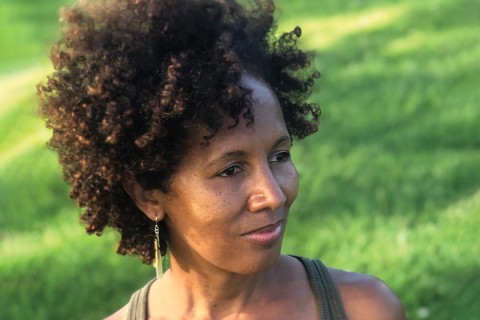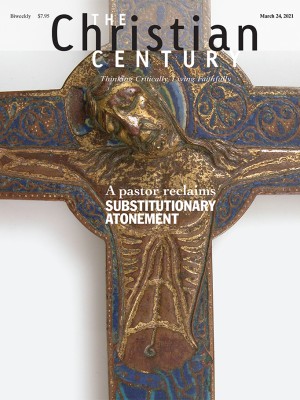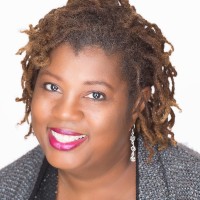Telling the story of The Black Church PBS documentary
“The church, as wonderful as it has been, has been a very difficult place for some people.”

Stacey L. Holman produced and directed the documentary series The Black Church: This Is Our Story, This Is Our Song, hosted by Henry Louis “Skip” Gates Jr. (see also a review of Gates’s companion book). She spoke to her longtime friend Katara Patton, the Century’s community engagement editor, after the series aired on PBS last month. For an extended version of this conversation, watch the video.
How did it come about for you to work on this series?
I was a producer-director on Henry Louis Gates’s Reconstruction series, and rumor had it that he would be doing a series on the Black church. I put my name in the hat, and God answered my prayers.
This was a story that Gates always wanted to tell, and he felt this was the time to tell it. It’s a very personal story—he returns to his home church. So I knew going in that this was going to be a little bit different from his previous series.
Read our latest issue or browse back issues.
It was very touching, too. He actually told a bit of his personal testimony.
Yeah. And that was one of our first stops when we started traveling for the series.
The documentary consists of four one-hour parts. You once said you got 400 years of history down to four hours. How did you choose what to include, what to leave out?
That was a very difficult process. We knew there were certain stories people wanted to hear: the civil rights movement, Richard Allen and the AME Church, the prosperity gospel. But even with those stories, what’s a different lens that we can put on them? We had a group of advisers—Bible scholars, preachers—who were instrumental in helping us narrow them down, really get to specific characters. And they introduced a lot of new characters to me and a lot of my crew members.
Who did the writing? Did you?
It was a combination. Shayla Harris, another director, was a part of the writing. She’s an incredible filmmaker, and she was our resident Black Catholic—that’s one story that was left on the editing room floor. Producers Kevin Burke and Chinisha Scott were involved with the writing, too. Skip put his dust on it, and we had our advisers look at it, to make sure the language was accurate and honest.
I watched it several times, and I was chewing on so many different parts, from the transatlantic slave trade up until today. What parts touched you personally?
The Muslim story—the fact that Islam had a footprint here that still exists today. I knew that when enslaved Africans were brought here, they were stripped of their freedom, of their dignity—but not of their gods. So to see evidence of Islam on Sapelo Island in Georgia was really moving to me.
It was also touching to hear people’s individual testimonies. They told us about how they came to know the Lord, how they were introduced to the Black church, their favorite songs and hymns. For me, this made it more personal—a tender moment from a lot of people who are so used to being so matter of fact, answering this question and that.
What was another one of your favorite parts of the project?
I loved visiting all the churches. First African Baptist in Savannah—this church was built in 1776 by enslaved men and women and freed men and women. The church on Sapelo Island. Very simple but just so beautiful. And Trinity UCC in Chicago—that stained glass is incredible.
Yeah, it tells such great stories.
And then the COGIC Church in LA, and of course Ebenezer Baptist in Atlanta. But also the praise house we visited—that was another incredible space. It’s the equivalent of somebody’s tool shed, and 50 or 60 people would go there and pray. Those were some really beautiful moments.
So, the music. The music is phenomenal throughout the series. I once heard Gates talk about how he got people to sing. Can you tell that story?
We interviewed John Legend, Jennifer Hudson, Yolanda Adams, even Kirk Franklin and Shirley Caesar. And we were like, “Skip, you can’t really ask these people to sing.” And when you say “can’t” to Gates, he’s like, “Oh, well, watch me.”
So he would be talking to Jennifer Hudson and she would say whatever song was her favorite song, maybe “Swing Low.” And he would say, “How does that go?” And they would start singing it. He did that with everybody. That’s how we got to some really beautiful musical moments.
Pastor Caesar actually caught on. She’s like, “I know what you’re doing. I don’t get to the age that I am not knowing that trick.” But she sang.
Gates seems to get into it with them, along with anybody else standing nearby. I got into it as I was watching. It just shows how powerful music has been throughout the Black church tradition. What else did you find that may offer some behind-the-scenes insight?
One of the questions that people ask is, Is the church still relevant today? Why are there a lot of youth just doing their own thing, not going to church? We asked people that, and a lot of them think that the church is just not part of what’s happening. If you look at Black Lives Matter, who was at the forefront? It wasn’t the church. And people feel like the church should be doing more. They feel like it’s really stuck in tradition.
Yet the church was so instrumental in the abolition and civil rights movements. They really took a hard stance—they felt like God was calling them to liberate us. I think it was Traci Blackmon who said in the series that the church still needs to be both prophet and priest, to care for the people but also to be the voice that pushes them. And clearly social justice is important in many churches, but I think young people just see it a lot differently.
One thing I learned about churches with older members is that technology was often last on their list. Now, during COVID, it’s at the top of the list.
It has to be.
Yeah, because people are in need. They’re searching, they’re lonely, and they need community.
Do you think this series will bring others back home to the church? Gates literally went back home, and he sounded like he was overcome with emotion. Do you think that will happen to people who watch it?
We have gotten some feedback that it has triggered that sweet memory. I understand it’s not been sweet for a lot of people, however, it’s definitely been sweet for some.
Yeah, there has been some hurt, too—like in any institution that has humans. I thought it was really risky of you to go there. Someone in the series said that the very people who are the foundation of the Black church—women and gay men—are also the oppressed people in the church. How did you decide to explore that?
We couldn’t avoid it even if we wanted to. It is important for documentarians to show all sides. And the church, as wonderful as it has been, has also been a very difficult place for people. For us it was a balance: How much do you say, and how do you say it?
And at the end of the day, what point are we making? Whether we’re telling a great story or talking about where the church is still falling short, what do we want people to walk away with?
I think in that same section, someone said the church is “also the place where you can imagine.” I thought that was very powerful, because a key piece of true faith development is whether it can transform. Were you transformed in the process of making this?
It definitely emboldened my faith in God, just hearing and reading about what we endured. It made me even prouder, looking at this institution built by us, for us, not closed to others but distinctly for us. It just made me raise my head up a little bit higher.
A version of this article appears in the print edition under the title “400 years in four hours.”






